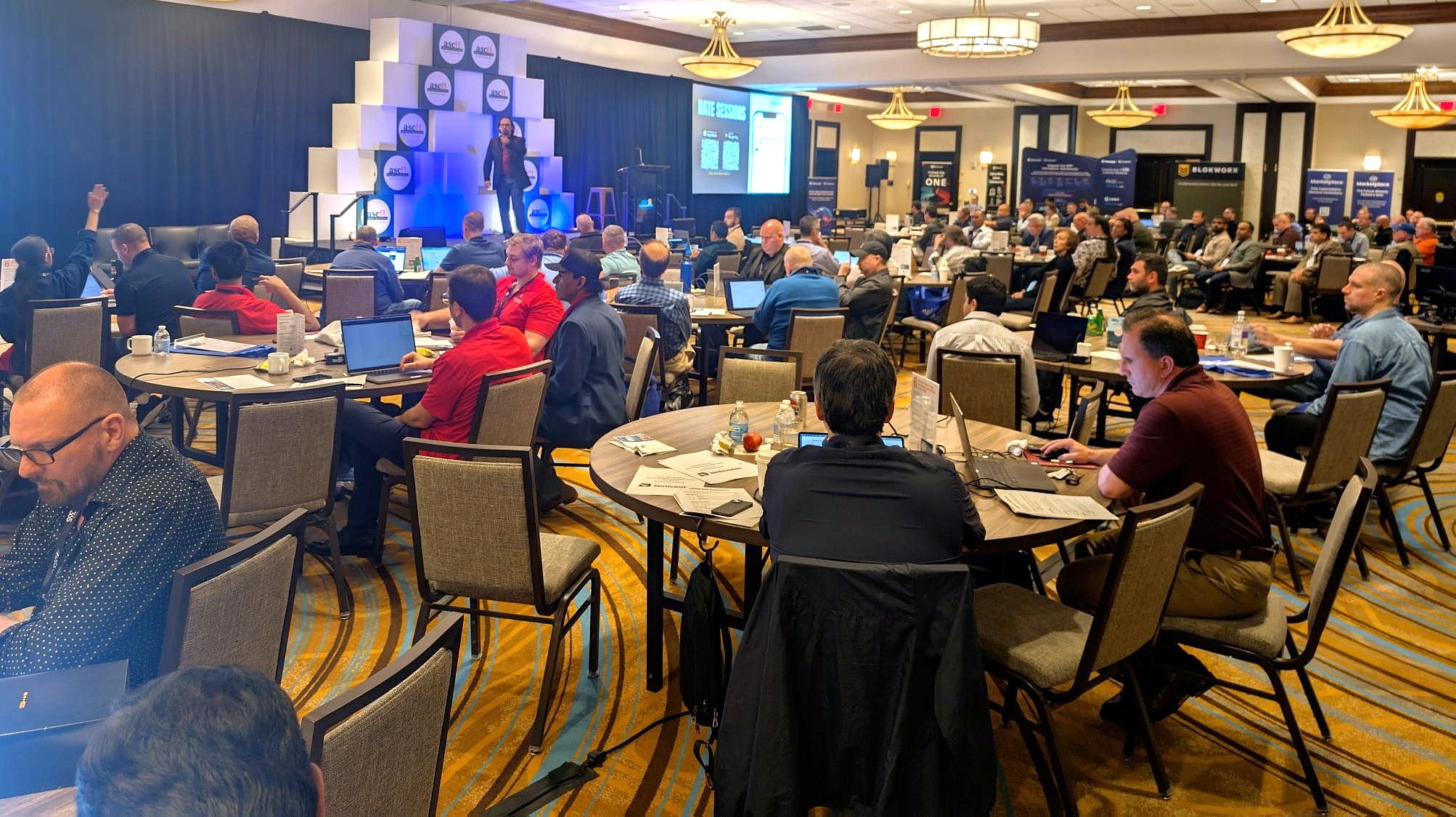From New SoCs to Optical Fiber, Intel Delivers Cloud-Optimized Innovations Across Network, Storage, Microservers, and Rack Designs
NEWS HIGHLIGHTS
SAN FRANCISCO, Calif., September 4, 2013 – Intel Corporation today introduced a portfolio of datacenter products and technologies for cloud service providers looking to drive greater efficiency and flexibility into their infrastructure to support a growing demand for new services and future innovation.
Server, network and storage infrastructure is evolving to better suit an increasingly diverse set of lightweight workloads, creating the emergence of microserver, cold storage and entry networking segments. By optimizing technologies for specific workloads, Intel will help cloud providers significantly increase utilization, drive down costs and provide compelling and consistent experiences to consumers and businesses.
The portfolio includes the second generation 64-bit IntelÆ Atom C2000 product family of system-on-chip (SoC) designs for microservers and cold storage platforms (code named “Avoton”) and for entry networking platforms (code named “Rangeley”). These new SoCs are the company’s first products based on the Silvermont micro-architecture, the new design in its leading 22nm Tri-Gate SoC process delivering significant increases in performance and energy efficiency, and arrives only nine months after the previous generation.
“As the world becomes more and more mobile, the pressure to support billions of devices and users is changing the very composition of datacenters,” said Diane Bryant, senior vice president and general manager of the Datacenter and Connected Systems Group at Intel. “From leadership in silicon and SoC design to rack architecture and software enabling, Intel is providing the key innovations that original equipment manufacturers, telecommunications equipment makers and cloud service providers require to build the datacenters of the future.”
Intel also introduced the IntelÆ Ethernet Switch FM5224 silicon which, when combined with the WindRiver Open Network Software suite, brings Software Defined Networking (SDN) solutions to servers for improved density and lower power.
Intel also demonstrated the first operational Intel Rack Scale Architecture (RSA)-based rack with IntelÆ Silicon Photonics Technology in combination with the disclosure of a new MXC connector and ClearCurve* optical fiber developed by Corning* with requirements from Intel. This demonstration highlights the speed with which Intel and the industry are moving from concept to functionality.
Customized, Optimized IntelÆ Atom SoCs for New and Existing Market SegmentsManufactured using Intel’s leading 22nm process technology, the new Intel Atom C2000 product family features up to eight cores, a range of 6 to 20Watts TDP, integrated Ethernet and support for up to 64 gigabytes (GB) of memory, eight times the previous generation. OVH* and 1&1, leading global web-hosting services companies, have tested Intel Atom C2000 SoCs and plan to deploy them in its entry-level dedicated hosting services next quarter. The 22 nanometer process technology delivers superior performance and performance per watt.
Intel is delivering 13 specific models with customized features and accelerators that are optimized for particular lightweight workloads such as entry dedicated hosting, distributed memory caching, static web serving and content delivery to ensure greater efficiency. The designs allow Intel to expand into new markets like cold storage and entry-level networking.
For example, the new Intel Atom configurations for entry networking address the specialized needs for securing and routing Internet traffic more efficiently. The product features a set of hardware accelerators called IntelÆ QuickAssist Technology that improves cryptographic performance. They are ideally suited for routers and security appliances.
By consolidating three communications workloads – application, control and packet processing – on a common platform, providers now have tremendous flexibility. They will be able to meet the changing network demands while adding performance, reducing costs and improving time-to-market.
Ericsson, a world-leading provider of communications technology and services announced that its blade-based switches used in the Ericsson Cloud System, a solution which enables service providers to add cloud capabilities to their existing networks, will sooninclude the Intel Atom C2000 SoC product family.
Microserver-Optimized Switch for Software Defined NetworkingNetwork solutions that manage data traffic across microservers can significantly impact the performance and density of the system. The unique combination of the Intel Ethernet Switch FM5224 silicon and the WindRiver Open Network Software suite will enable the industry’s first 2.5GbE, high-density, low latency, SDN Ethernet switch solutions specifically developed for microservers. The solution enhances system level innovation, and complements the integrated Intel Ethernet controller within the Intel Atom C2000 processor. Together, they can be used to create SDN solutions for the datacenter.
Switches using the new Intel Ethernet Switch FM5224 silicon can connect up to 64 microservers, providing up to 30 percent3 higher node density. They are based on Intel Open Network Platform reference design announced earlier this year.
First Demonstration of Silicon Photonics-Powered RackMaximum datacenter efficiency requires innovation at the silicon, system and rack level. Intel’s RSA design helps industry partners to re-architect datacenters for modularity of components (storage, CPU, memory, network) at the rack level. It provides the ability to provision or logically compose resources based on application specific workload requirements. Intel RSA also will allow for the easier replacement and configuration of components when deploying cloud computing, storage and networking resources.
Intel today demonstrated the first operational RSA-based rack equipped with the newly announced Intel Atom C2000 processors, IntelÆ XeonÆ processors, a top-of-rack Intel SDN-enabled switch and Intel Silicon Photonics Technology. As part of the demonstration, Intel also disclosed the new MXC connector and ClearCurve* fiber technology developed by Corning* with requirements from Intel. The fiber connections are specifically designed to work with Intel Silicon Photonics components.
The collaboration underscores the tremendous need for high-speed bandwidth within datacenters. By sending photons over a thin optical fiber instead of electrical signals over a copper cable, the new technologies are capable of transferring massive amounts of data at unprecedented speeds over greater distances. The transfers can be as fast as 1.6 terabits per second4 at lengths up to 300 meters5 throughout the datacenter.
To highlight the growing range of Intel RSA implementations, Microsoft and Intel announced a collaboration to innovate on Microsoft’s next-generation RSA rack design. The goal is to bring even better utilization, economics and flexibility to Microsoft’s datacenters.
The Intel Atom C2000 product family is shipping to customers now with more than 50 designs for microservers, cold storage and networking. The products are expected to be available in the coming months from vendors including Advantech*, Dell*, Ericsson*, HP*, NEC*, Newisys*, Penguin Computing*, Portwell*, Quanta*, Supermicro*, WiWynn*, ZNYX Networks*.
View the Multimedia Press Kit(includes the full story with high resolution photos, videos, quotes, fact sheets, and more)
About IntelIntel (NASDAQ: INTC) is a world leader in computing innovation. The company designs and builds the essential technologies that serve as the foundation for the world’s computing devices. Additional information about Intel is available at newsroom.intel.com and blogs.intel.com.
Intel, Atom, Xeon and the Intel logo are trademarks of Intel Corporation in the United States and other countries.†
* Other names and brands may be claimed as the property of others.
Software and workloads used in performance tests may have been optimized for performance only on Intel microprocessors. Performance tests, such as SYSmark and MobileMark, are measured using specific computer systems, components, software, operations and functions. Any change to any of those factors may cause the results to vary. You should consult other information and performance tests to assist you in fully evaluating your contemplated purchases, including the performance of that product when combined with other products. For more information go to http://www.intel.com/performance.
1 Performance based on Dynamic Web Benchmark Performance: Atom S1260 (8GB, SSD, 1GbE), Score=1522. Atom C2750(32GB, SSD,10GbE), Score=11351. †
2 Performance per Watt based on Dynamic Web Benchmark: Atom S1260 (8GB,SSD, 1GbE), Score=1522, est node power=20W, PPW=76.1 Atom C2730(32GB, SSD,10GbE), Score=8778, est node power=19W, PPW=462. Source: Intel Internal measurements as of August 2013. Refer to backup for additional details.†
3 Based on 2.5G port count compared to the BCM56540†
4 Measured per fiber bandwidth on an Agilent Bit Error Rate Tester (BERT) that included a N4960A-CJ1 controller, N4951A-H32 pattern generator and N4952A-E32 error detector. MXC connector used had 32 fibers for an actual data rate of .8 tera-bits. Mechanical models and CAD simulations show that the MXC can accommodate up to 64 fibers for a theoretical total bandwidth of 1.6 Tera-bits per second.†††
5 ClearCurve fiber operating at 300 meters was tested using 300 meters of new ClearCurve fiber connected to an Agilent Bit Error Rate Tester (BERT) that included a N4960A-CJ1 controller, N4951A-H32 pattern generator and N4952A-E32 error detector.†
Results have been estimated based on internal Intel analysis and are provided for informational purposes only. Any difference in system hardware or software design or configuration may affect actual performance.†
Intel’s compilers may or may not optimize to the same degree for non-Intel microprocessors for optimizations that are not unique to Intel microprocessors. These optimizations include SSE2, SSE3, and SSE3 instruction sets and other optimizations. Intel does not guarantee the availability, functionality, or effectiveness of any optimization on microprocessors not manufactured by Intel.†
Microprocessor-dependent optimizations in this product are intended for use with Intel microprocessors. Certain optimizations not specific to Intel microarchitecture are reserved for Intel microprocessors. Please refer to the applicable product User and Reference Guides for more information regarding the specific instruction sets covered by this notice.† †
INFORMATION IN THIS DOCUMENT IS PROVIDED IN CONNECTION WITH INTEL PRODUCTS. NO LICENSE, EXPRESS OR IMPLIED, BY ESTOPPEL OR OTHERWISE, TO ANY INTELLECTUAL PROPERTY RIGHTS IS GRANTED BY THIS DOCUMENT. EXCEPT AS PROVIDED IN INTEL’S TERMS AND CONDITIONS OF SALE FOR SUCH PRODUCTS, INTEL ASSUMES NO LIABILITY WHATSOEVER AND INTEL DISCLAIMS ANY EXPRESS OR IMPLIED WARRANTY, RELATING TO SALE AND/OR USE OF INTEL PRODUCTS INCLUDING LIABILITY OR WARRANTIES RELATING TO FITNESS FOR A PARTICULAR PURPOSE, MERCHANTABILITY, OR INFRINGEMENT OF ANY PATENT, COPYRIGHT OR OTHER INTELLECTUAL PROPERTY RIGHT.
A “Mission Critical Application” is any application in which failure of the Intel Product could result, directly or indirectly, in personal injury or death. SHOULD YOU PURCHASE OR USE INTEL’S PRODUCTS FOR ANY SUCH MISSION CRITICAL APPLICATION, YOU SHALL INDEMNIFY AND HOLD INTEL AND ITS SUBSIDIARIES, SUBCONTRACTORS AND AFFILIATES, AND THE DIRECTORS, OFFICERS, AND EMPLOYEES OF EACH, HARMLESS AGAINST ALL CLAIMS COSTS, DAMAGES, AND EXPENSES AND REASONABLE ATTORNEYS’ FEES ARISING OUT OF, DIRECTLY OR INDIRECTLY, ANY CLAIM OF PRODUCT LIABILITY, PERSONAL INJURY, OR DEATH ARISING IN ANY WAY OUT OF SUCH MISSION CRITICAL APPLICATION, WHETHER OR NOT INTEL OR ITS SUBCONTRACTOR WAS NEGLIGENT IN THE DESIGN, MANUFACTURE, OR WARNING OF THE INTEL PRODUCT OR ANY OF ITS PARTS.
Intel may make changes to specifications and product descriptions at any time, without notice. Designers must not rely on the absence or characteristics of any features or instructions marked “reserved” or “undefined”. Intel reserves these for future definition and shall have no responsibility whatsoever for conflicts or incompatibilities arising from future changes to them. The information here is subject to change without notice. Do not finalize a design with this information. †
The products described in this document may contain design defects or errors known as errata which may cause the product to deviate from published specifications. Current characterized errata are available on request.†
Contact your local Intel sales office or your distributor to obtain the latest specifications and before placing your product order. †














